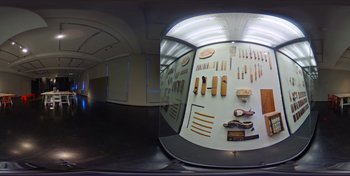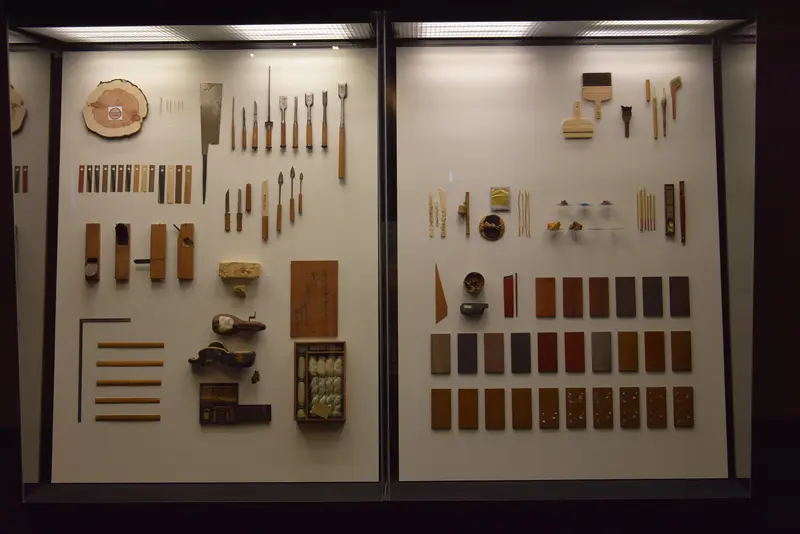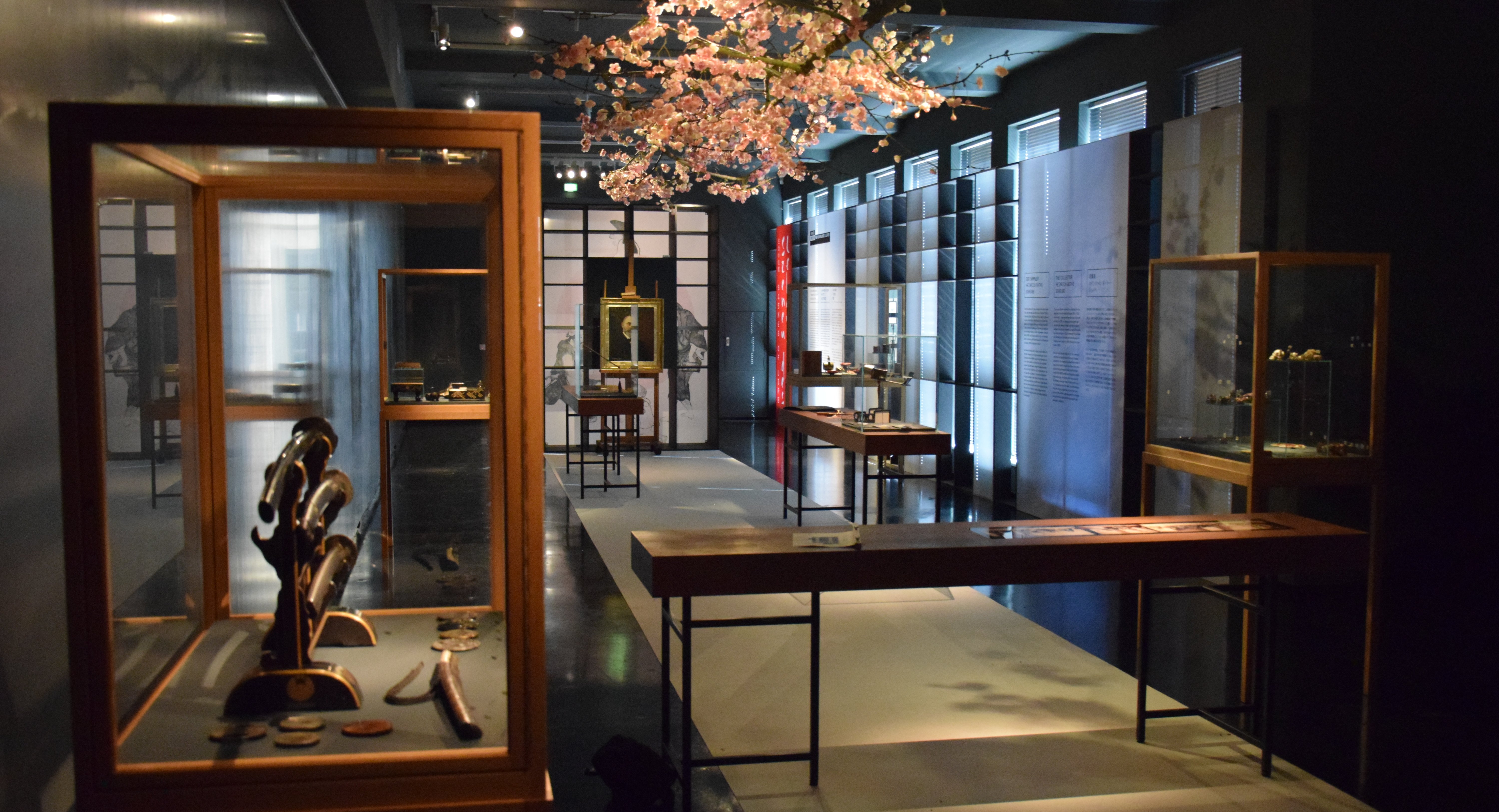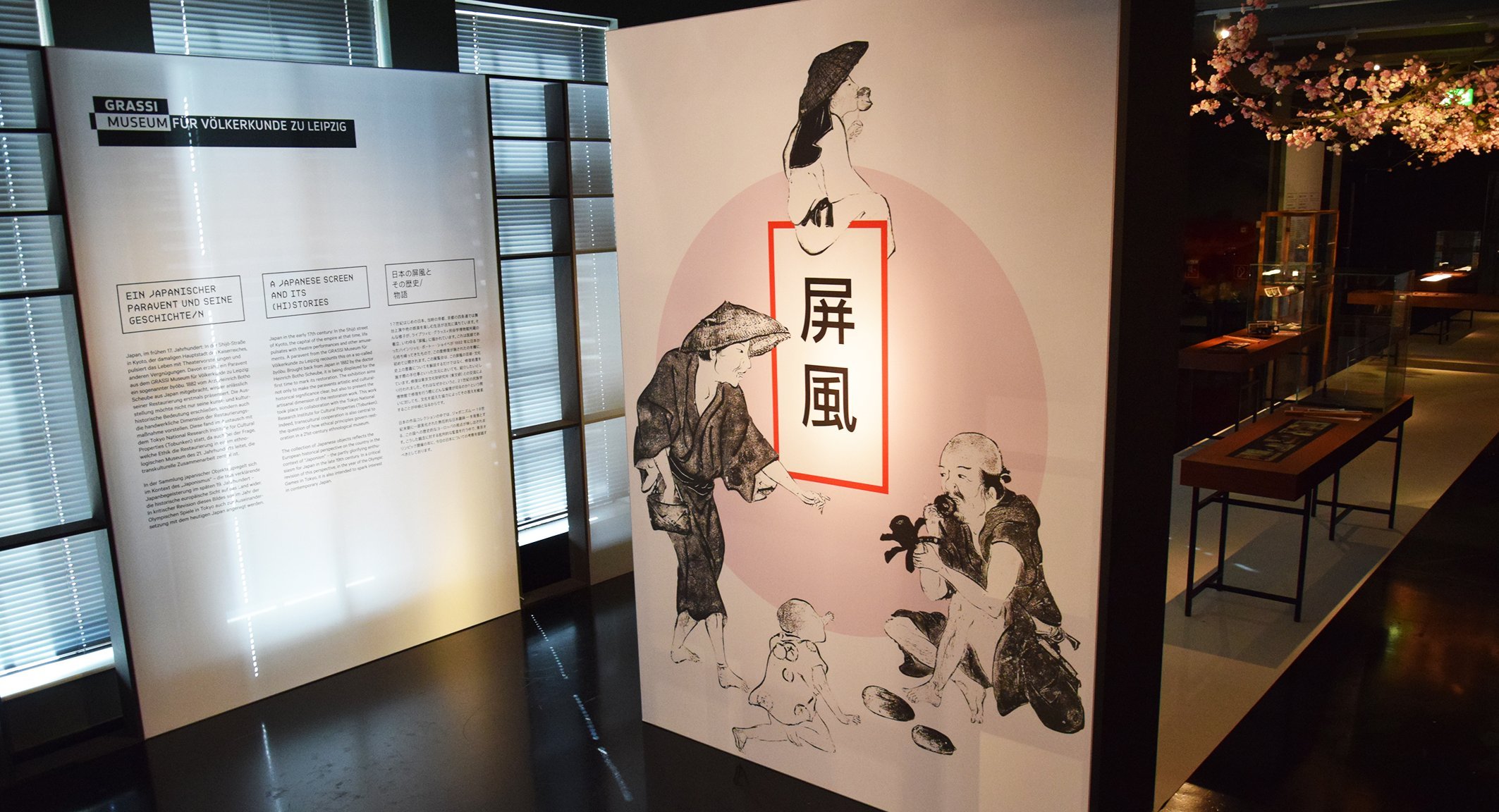[Translate to English:] detail 1
Historical tools and materials used to make the screen, most of which were collected for the museum as early as the 19th century.
In Japan, the field of conservation is strongly influenced by technical issues. Conservators learn to produce objects true to the original according to traditional methods. This specialized knowledge and skill, which fundamentally affects the approach to conservation, is part of the immaterial cultural heritage.
In Europe and the United States, on the other hand, the conservation of an object preserves all traces of its former use – as clues to the object’s possibly eventful history and its origin. The aim is, therefore, to maintain all the original components as far as possible and not to replace them.

Despite their differences, both conservation approaches have been combined in this project. In the future, the task will be to step up cooperation with conservation experts of those societies of origin from which the collection objects originate and to make greater use of their knowledge.
Historical tools and materials used to make the screen, most of which were collected for the museum as early as the 19th century.

Three-part writing set: Abacus with wooden beads, a compartment for a bamboo brush, a set of black and red Sumi ink sticks, two inkstones and metal boxes (suzuribako, soroban), before 1892, acquired 1909 from the collector Heinrich Botho Scheube, GRASSI Ethnographic Museum Leipzig, inv. no. OAs 05023 a-k
Burnishing bone (hone-hera), ivory with gold and silver lacquer decorations, before 1892, acquired 1909 from the collector Heinrich Botho Scheube, GRASSI Ethnographic Museum Leipzig, inv. no. OAs 05084
Burnishing bone (hone-hera), ivory with gold and silver lacquer decorations, before 1892, acquired 1909 from the collector Heinrich Botho Scheube, GRASSI Ethnographic Museum Leipzig, inv. no. OAs 05083
Burnishing bone (hone-hera), ivory with gold and silver lacquer decorations and mother-of-pearl inlays, before 1892, acquired 1909 from the collector Heinrich Botho Scheube, GRASSI Ethnographic Museum Leipzig, inv. no. OAs 04682
Bamboo brush case with small inkwell, before 1892, acquired 1909 from the collector Heinrich Botho Scheube, GRASSI Ethnographic Museum Leipzig, inv. no. OAs 05022
Gold leaf, so-called transfer gold on laminated paper, GRASSI Ethnographic Museum Leipzig, without inv. no.
Hand driver (baren), wood, black lacquer, bamboo leaf, before 1912, donated 1912 by the collector Otto Neubert, GRASSI Ethnographic Museum Leipzig, inv. no. OAs 11244

